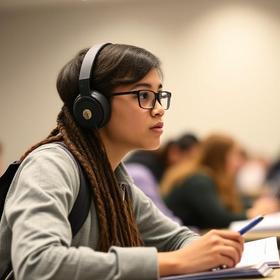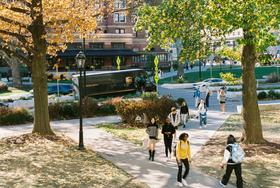Introduction
For many families, the decision to attend a community college represents a key opportunity—the chance for a first-generation student (i.e. one whose parent(s) did not complete college) to access higher education without overwhelming financial burden or geographic relocation. As a parent or guardian, you play a crucial role in helping your child navigate this transition. This guide provides practical advice, insights, and strategies (updated for 2025) to support your family’s journey.
Throughout, the phrase first-generation student refers to those whose parent(s) or guardians did not complete a four-year degree (though definitions may vary). PMC+1
Why Community College Makes Sense for First-Generation Students
Community colleges offer several advantages that can ease the path for first-generation students:
Affordability & Accessibility: These institutions generally cost far less per credit hour than four-year universities. First-generation students are more likely to enroll at public and community colleges for this reason.
Proximity to Home / Flexibility: Many community colleges are local or within commuting distance, reducing housing costs and preserving family support systems.
Smaller Class Sizes & Remedial Support: Many students benefit from more personalized attention, developmental math or English courses, and support labs.
Transfer Pathways: Many community colleges partner with local universities to allow smooth transfer of credits toward a bachelor’s degree (often through “2+2” programs).
Career & Technical Training Options: Students can pursue certificates, licensure, or associate degrees with strong labor market value.
Given that roughly 45 % of community college students in the U.S. are first-generation, these institutions serve a pivotal role in equity and access. crossrivertherapy.com
That said, first-generation students face elevated challenges: they are statistically more likely to drop out after the first year, struggle with campus belonging, academic preparation, or navigating administrative systems. Ithaka S+R+1
Key Challenges (and What You Can Do)
Understanding potential barriers helps you anticipate and mitigate them alongside your student:
| Challenge | Description | Parental / Student Strategy |
|---|---|---|
| Financial stress | Many first-gen students lack financial support or knowledge managing college costs. (ERIC) | Help your student draft a budget, apply early for aid, and monitor expenses. Consider parental education about financial aid terms (grants, loans, Pell, etc.). |
| Academic preparation gaps | They may have lower readiness in core areas. (league.org) | Encourage summer bridge or remedial programs. Use tutoring, skill labs, and skip courses only when ready. |
| Navigating bureaucracy | College processes, jargon, and deadlines can overwhelm first-timers. (EAB) | Stay engaged—help track deadlines, attend orientations, and encourage questions. |
| Belonging & identity stress | Students may feel out of place, underconfident, or disconnected socially. (Community College Research Center) | Encourage involvement in first-gen groups, mentorship, and campus life activities. Reaffirm that they belong and are valued. |
| Retention risk | Many first-gen students exit before completing the degree. (Ithaka S+R) | Monitor early academic performance, intervene when needed, and push for consistent advising and support. |
As a parent, your encouragement and advocacy can mitigate many of these obstacles.
How to Support Your Student — Step by Step
1. Start Early — The Transition Phase
After high school, stay involved in the college decision process: help research local two-year colleges, programs, and transfer agreements.
Attend orientation sessions (often labeled “New Student Orientation” or “First-Gen Welcome”). These frequently include workshops for navigating campus systems, advising, and peer networks.
2. Financial Planning & Aid Navigation
Have your student complete the FAFSA (or equivalent) as early as possible. Missing deadlines can jeopardize eligibility.
Educate yourselves on types of aid: grants, scholarships, work-study, and low-interest federal loans. Many first-gen students qualify for need-based grants. Ask the college about emergency grants, textbook lending programs, and food/housing assistance.
Teach your student basic financial literacy: budgeting monthly costs, limiting debt, tracking expenses.
3. Leverage Student Services & Support
Most community colleges offer resources explicitly for first-generation students or general academic support:
Academic advisors / success coaches: Meet regularly to plan courses and keep on track.
Tutoring labs and writing centers: Use these proactively before challenges worsen.
Mentorship / peer networks: First-gen support groups, peer mentors, or learning communities can reduce isolation.
Career services & internships: Many colleges introduce job shadowing, resume help, or early networking to bridge to employment. EAB
Mental health and wellness: The emotional toll can be significant—counseling or support groups are vital.
At Elgin Community College, for example, the school promotes “four student resources” tailored to first-generation students to guide them through their academic journey. Elgin Community College
4. Monitor Progress & Encourage Adjustment
Help your student review midterm grades, identify trouble courses, and plan interventions early.
Stay in touch with advisors or faculty if permission and consent allow.
Encourage reflection: Is the course load too heavy? Are shifts in major needed? Don’t be wedded to a single track—often adjustment is wise.
5. Transfer Strategy (If Desired)
If a bachelor’s degree is the ultimate goal, map a clear 2+2 pathway:
Select courses that carry over to the target four-year school.
Consult articulation agreements and transfer guides.
Keep GPA above transfer minimums.
Meet transfer application deadlines well in advance.
Visit prospective transfer campuses and connect with their admissions staff.
Many states incentivize seamless transfer from community colleges to state universities.
Expert and Current-Year Trends to Watch AI-Assisted Tutoring & Support
In 2025, some community college systems (e.g., California’s 116-campus network) are piloting AI learning assistants to supplement tutoring 24/7. Early results suggest positive effects on GPA and student engagement.
Unified First-Gen Student Centers
Universities are consolidating first-generation support (academic, social, advising) into single centers or embedded living-learning communities, reducing friction in accessing help.
Federal Policy Changes
Shifting federal aid rules and accountability provisions in 2025 may affect financial aid, verification processes, and institutional funding to community colleges. Parents should stay aware of policy shifts during enrollment. EAB
Institutional Best Practices
Research identifies key institutional practices correlated with better outcomes for first-generation students:
Simplified communication (less jargon) EAB
Proactive advising interventions
Career development embedded early
Mentorship and peer support
Equity-focused program design (e.g. Guided Pathways)
Roadmap: What to Do in Year 1
Orientation & First-Gen Program Participation — Connect quickly to peer groups and resources.
Meet Your Academic Advisor — Build a semester-by-semester plan that aligns with your long-term goals.
Utilize Tutoring Early — If a class feels hard early on, act immediately.
Track Assignments & Grades — Use planners or digital tools.
Join a Student Organization or First-Gen Cohort — Build community and support.
Consult Career Services — Begin crafting a resume, exploring internships or part-time work.
Check Transfer Requirements (if relevant) — Confirm credits will be accepted elsewhere.
Evaluate & Adapt — At semester’s end, reflect: what worked, what needs change?
Final Thoughts for Parents
Encourage open dialogue — The transition to college is unfamiliar for first-generation students. Let them know you’ll support their questions and struggles.
Stay informed—but don’t micromanage — Ask about major deadlines, financial updates, or academic struggles, but encourage autonomy.
Be a liaison — Sometimes a parent can help coordinate with college offices, ensuring your student advocates for themselves.
Celebrate small successes — Recognize achievements, no matter how small, to reinforce persistence and confidence.
Model persistence — Your attitude can shape resilience.
Community college is a uniquely powerful pathway for first-generation students. With your active involvement, informed guidance, and the strategic use of institutional support, your child can maximize this opportunity, build foundational skills, and launch toward a degree or career.













